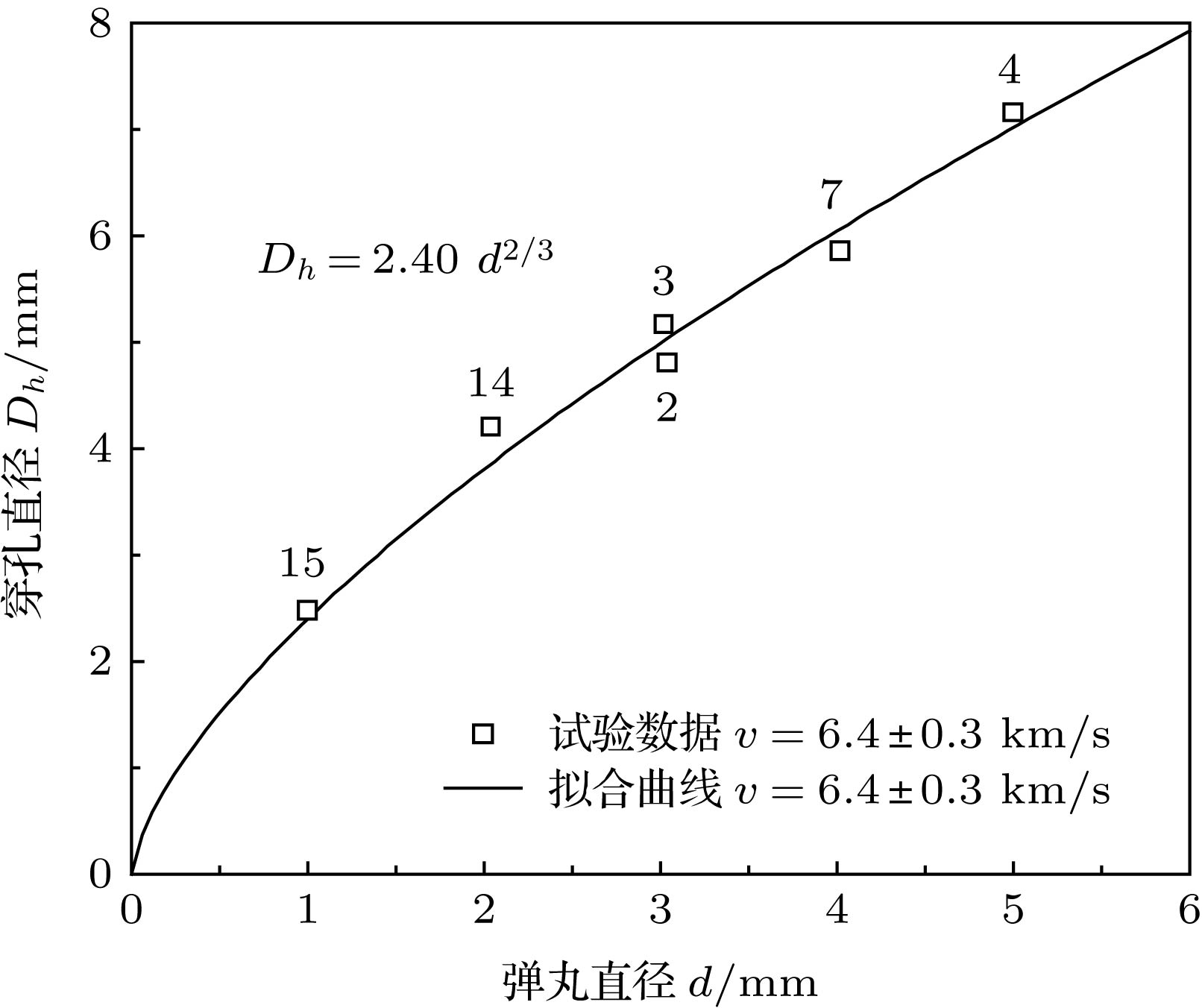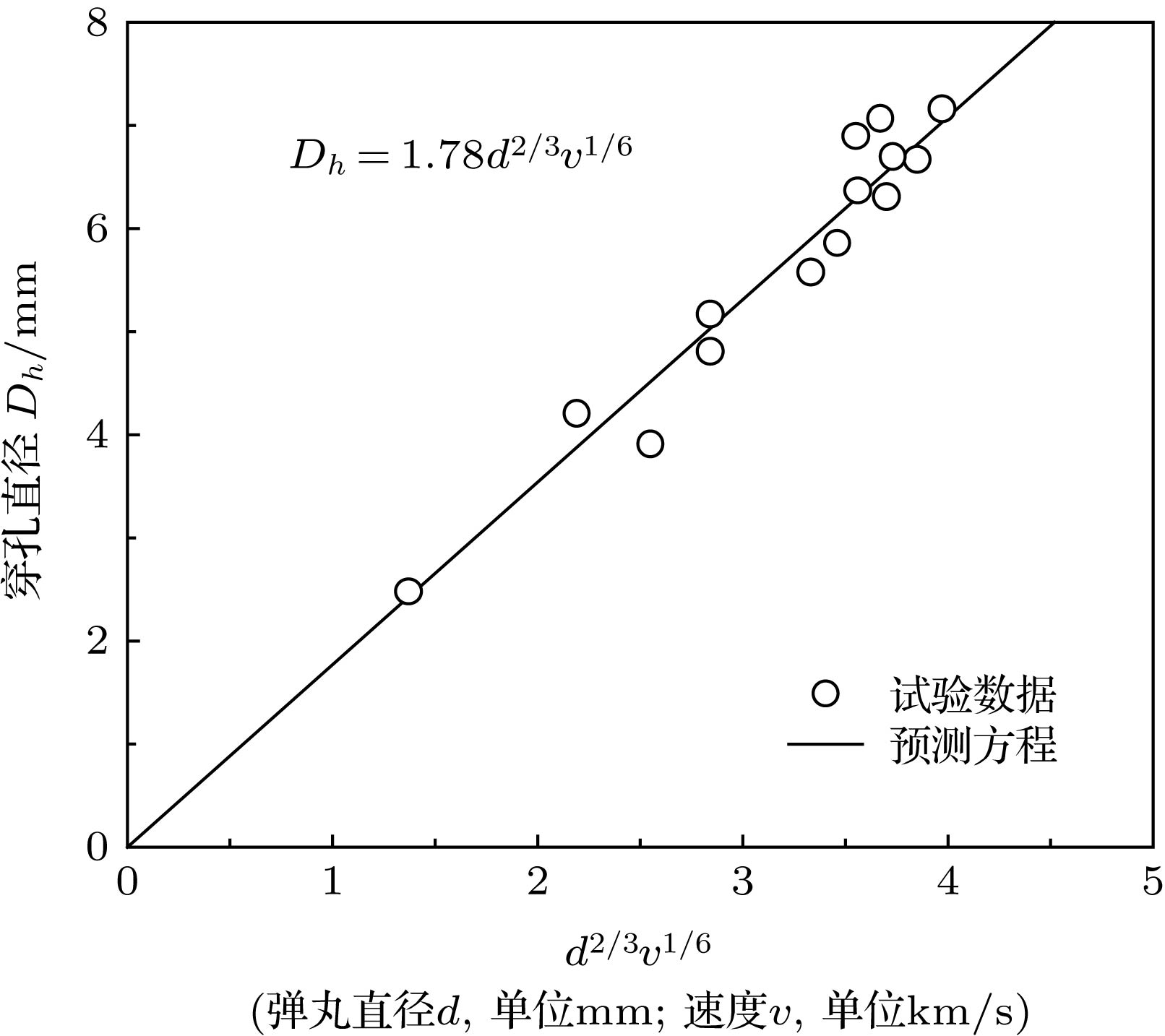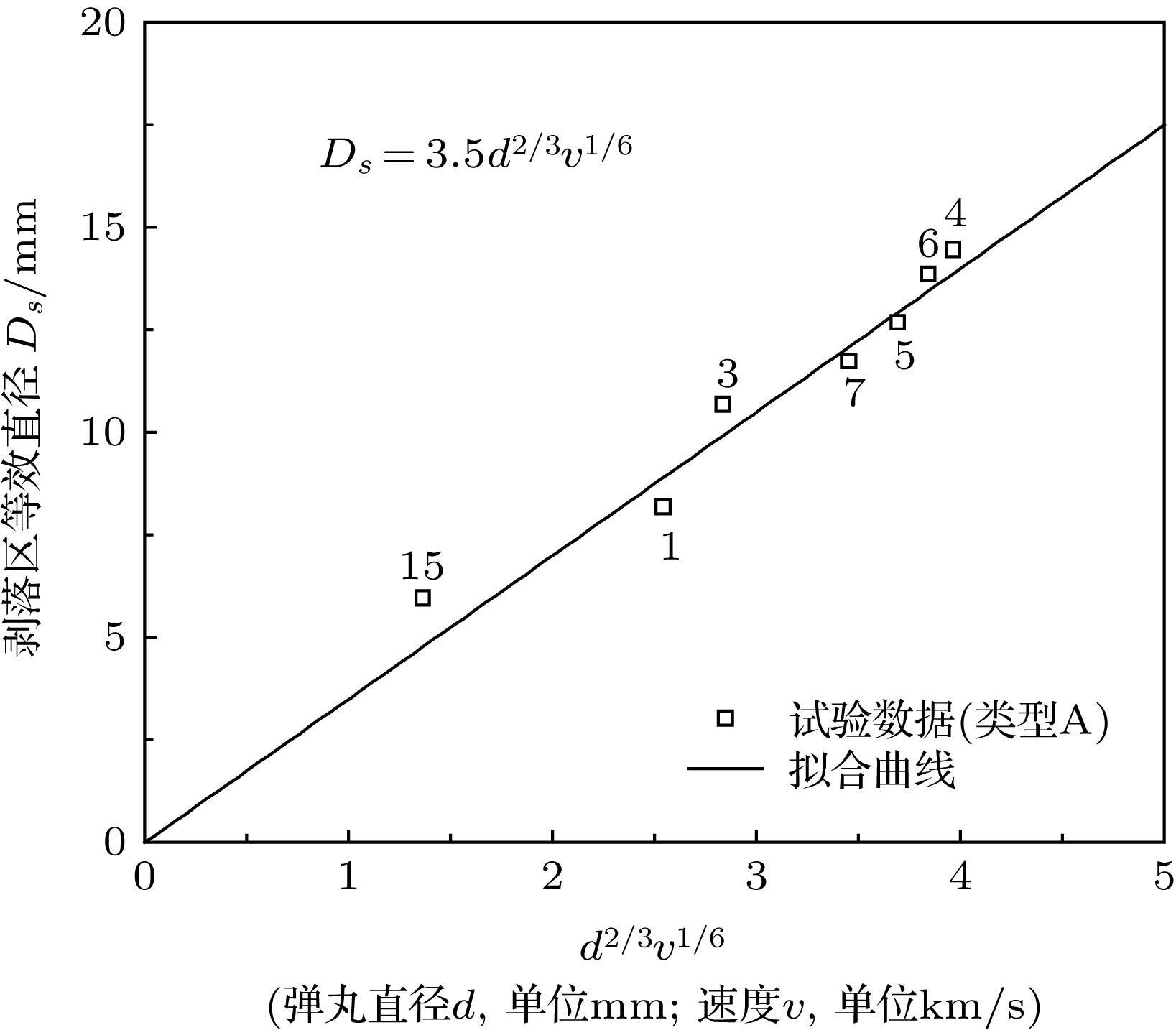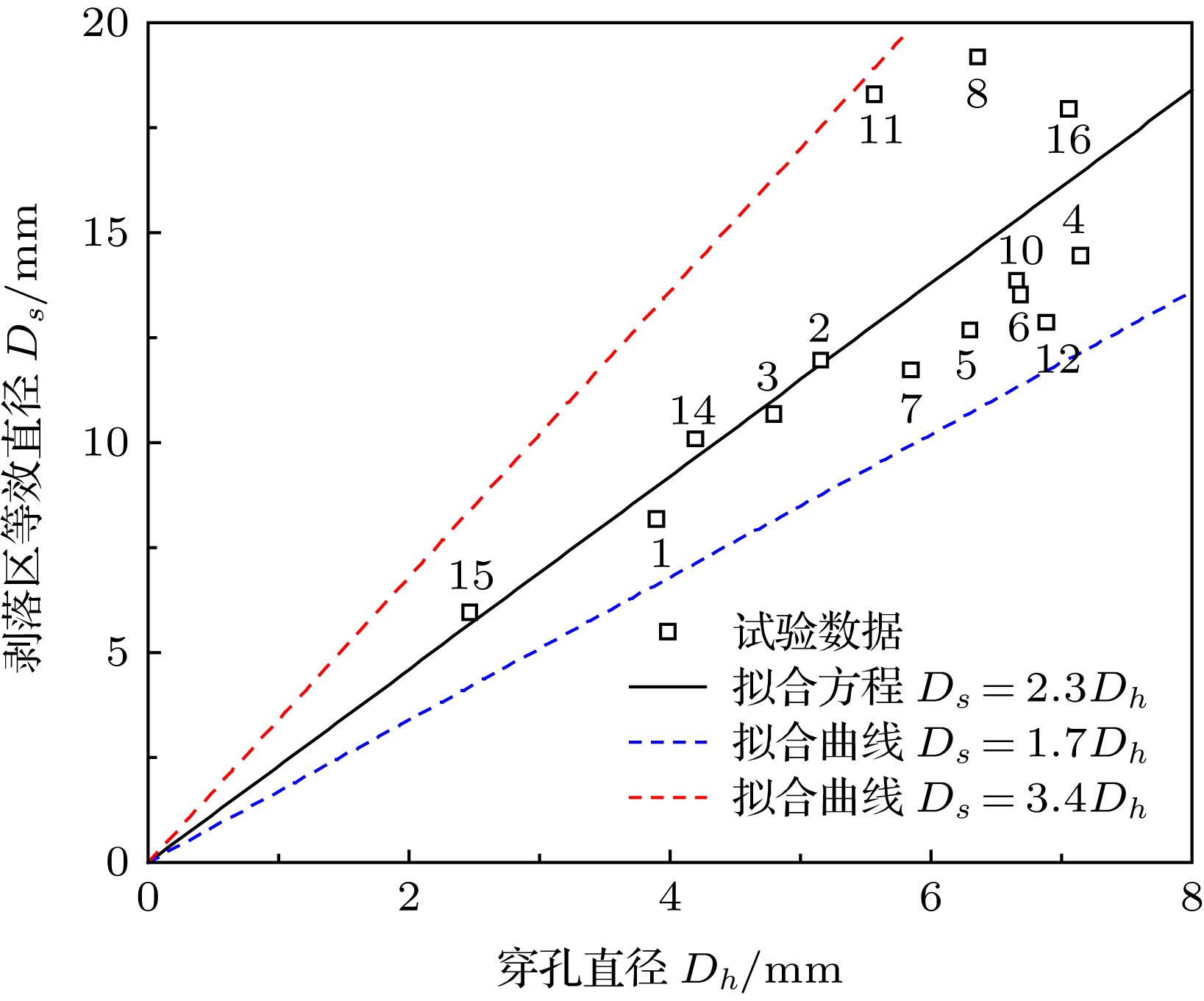-
Using two-stage light gas gun, we study the hypervelocity impact characteristics of spacecraft key component, solar cell arrays. The damage morphologies in the ground simulation tests match well with those on-situ orbital impacts. The main characteristics of mechanical damage, including the central pit, cover glass shatter zone, and conchiodal spallation, are measured by using a microscope under 20 times magnification. To study the mechanical damage properties in solar arrays, we carry out 15 shots totally, under different impact locations, impact velocities, and particle diameters. Under the condition of impact angel of zero degree, the damage equation of perforation diameter of solar arrays and the damage equation of the diameter of shatter zone in cover glass are developed, respectively. The results show that the perforation diameter and the diameter of cover glass shatter zone are mainly related to the diameter of particle with 2/3 power, while related to the velocity of impact with 1/6 power. Compared with the damage equation in the literature, the damage equations in this article are very suitable for describing hypervelocity impact damage properties of solar arrays used in our country's spacecraft. The results are of significance for our country's aerospace engineering.
-
Keywords:
- solar cell arrays /
- hypervelocity impact /
- damage equation /
- orbital debris
[1] Drolshagen G, Mcdonnell T, Mandeville J C, Moussic A 2006 Acta Astron. 58 471
 Google Scholar
Google Scholar
[2] Medina D F, Wright L, Campbell M 2001 Advances in Space Research 28 1347
 Google Scholar
Google Scholar
[3] Mcdonnell J A, Catling D J, Herbert M K, Clegg R A 2001 Int. J. Impact Engin. 26 487
 Google Scholar
Google Scholar
[4] Stansbery E G, Foster J L 2004 Advances in Space Research 34 878
 Google Scholar
Google Scholar
[5] Drolshagen G, Mcdonnell J A, Stevenson T, Aceti R, Gerlach L 1995 Advances in Space Research 16 85
[6] Moussi A, Drolshagen G, Mcdonnell J A, et al 2005 Advances in Space Research 35 1243
 Google Scholar
Google Scholar
[7] Graham G A, Mcbride N, Kearsley A T, Drolshagen G, Green S F, Mcdonnell J A M, Grady M M, Wright I P 2001 Int. J. Impact Engin. 26 263
 Google Scholar
Google Scholar
[8] Kearsley A T, Graham G A, Mcdonnell J A M, Taylor E A, Drolshagen G, Chater R J, McPhail D, Burchell M J 2007 Advances in Space Research 39 590
 Google Scholar
Google Scholar
[9] Christie R J, Best S R, Myhre C A 1994 NASA Center for AeroSpace Information (CASI), NASA Technical Memorandum 106509 1
[10] Burt R R, Christiansen E L 2001 Orbital Debris Quarterly News 6 2
[11] Burt R R, Christiansen E L 2001 NASA Johnson Space Center Report No. JSC- 29485 1
[12] Stadermann F J, Heiss C H, Reichling M 1997 Advances in Space Research 20 1517
 Google Scholar
Google Scholar
[13] Akahoshi Y, Nakamura T, Fukushige S, Furusawa N, Kusunoki S, Machida Y, Koura T, Watanabe K, Hosoda S, Fujita T, Cho M 2008 Int. J. Impact Engin. 35 1678
 Google Scholar
Google Scholar
[14] Harano T, Machida Y, Fukushige S, Koura T, Hosoda S, Cho M, Akahoshi Y 2006 Int. J. Impact Engin. 33 326
 Google Scholar
Google Scholar
[15] 黄建国, 韩建伟, 李宏伟, 蔡明辉, 李小银 2008 57 7950
 Google Scholar
Google Scholar
Huang J G, Han W, Li H W, Cai M H, Li X Y 2008 Acta Phys. Sin. 57 7950
 Google Scholar
Google Scholar
[16] 李宏伟, 黄建国, 韩建伟, 蔡明辉, 李小银, 高著秀 2010 航天器环境工程 27 290
 Google Scholar
Google Scholar
Li H W, Huang J G, Han J W, Cai M H, Li X Y, Gao Z X 2010 Spacecraft Environment Engineering 27 290
 Google Scholar
Google Scholar
[17] 张立佼 2015 硕士学位论文 (沈阳: 沈阳理工大学)
Zhang L J 2005 M. S. Thesis (Shenyang: Shenyang Ligong University) (in Chinese)
[18] Tang En LLng, Li Z, Zhang Q M, Wang M, Xiang S H, Liu S H, He L P, Han Y F, Xia J, Wang H L, Xu M Y 2016 Int. J. Appl. Electromagn. Mech. 51 337
 Google Scholar
Google Scholar
[19] 姜东升, 郑世贵, 马宁, 刘莹, 邱羽玲 2017 航天器工程 26 114
 Google Scholar
Google Scholar
Jiang D S, Zheng S G, Ma N, Liu Y, Qiu Y L 2017 Spacecraft Engineering 26 114
 Google Scholar
Google Scholar
[20] 张书锋, 柴昊, 周玉新, 张明志, 刘振风, 王田 2016 爆炸与冲击 36 386
 Google Scholar
Google Scholar
Zhang SF, Chai H, Zhou Y X, Zhang M Z, Liu Z F, Wang T 2016 Explosion and Shock Waves 36 386
 Google Scholar
Google Scholar
-
表 1 试验结果
Table 1. Test result.
试样编号 弹丸直径d/mm 弹丸速度v/km·s–1 穿孔直径Dh/mm 剥落区直径Ds/mm 撞击点 分组 No.01 3.04 3.213 3.91 8.15 A 1 No.02 3.02 6.245 5.17 11.93 B 1 No.03 3.04 6.093 4.81 10.65 A 2 No.04 5.00 6.301 7.16 14.42 A 1 No.05 5.00 4.097 6.31 12.65 A 1 No.06 5.00 5.242 6.67 13.83 A 2 No.07 4.02 6.581 5.86 11.70 A 1 No.08 5.00 3.247 6.37 19.15 B 1 No.10 5.00 4.332 6.70 13.50 B 1 No.11 4.04 5.127 5.58 18.26 C 1 No.12 5.00 3.205 6.90 12.83 C 2 No.14 2.04 6.398 4.21 10.06 B 1 No.15 1.00 6.675 2.48 5.93 A 1 No.16 4.52 5.892 7.07 17.92 B 2 表 2 穿孔直径方程的检验
Table 2. Comparison between the equation values and experimental data.
试样编号 弹丸直径d/mm 弹丸速度v/km·s–1 穿孔直径Dh/mm 撞击位置类型 本文方程预测Dh值 预测误差 No.03 3.04 6.093 4.81 A 5.05 5.0% No.06 5.00 5.242 6.67 A 6.86 2.8% No.12 5.00 3.205 6.90 B 6.32 –8.4% No.16 4.52 5.892 7.07 A 6.54 –7.5% -
[1] Drolshagen G, Mcdonnell T, Mandeville J C, Moussic A 2006 Acta Astron. 58 471
 Google Scholar
Google Scholar
[2] Medina D F, Wright L, Campbell M 2001 Advances in Space Research 28 1347
 Google Scholar
Google Scholar
[3] Mcdonnell J A, Catling D J, Herbert M K, Clegg R A 2001 Int. J. Impact Engin. 26 487
 Google Scholar
Google Scholar
[4] Stansbery E G, Foster J L 2004 Advances in Space Research 34 878
 Google Scholar
Google Scholar
[5] Drolshagen G, Mcdonnell J A, Stevenson T, Aceti R, Gerlach L 1995 Advances in Space Research 16 85
[6] Moussi A, Drolshagen G, Mcdonnell J A, et al 2005 Advances in Space Research 35 1243
 Google Scholar
Google Scholar
[7] Graham G A, Mcbride N, Kearsley A T, Drolshagen G, Green S F, Mcdonnell J A M, Grady M M, Wright I P 2001 Int. J. Impact Engin. 26 263
 Google Scholar
Google Scholar
[8] Kearsley A T, Graham G A, Mcdonnell J A M, Taylor E A, Drolshagen G, Chater R J, McPhail D, Burchell M J 2007 Advances in Space Research 39 590
 Google Scholar
Google Scholar
[9] Christie R J, Best S R, Myhre C A 1994 NASA Center for AeroSpace Information (CASI), NASA Technical Memorandum 106509 1
[10] Burt R R, Christiansen E L 2001 Orbital Debris Quarterly News 6 2
[11] Burt R R, Christiansen E L 2001 NASA Johnson Space Center Report No. JSC- 29485 1
[12] Stadermann F J, Heiss C H, Reichling M 1997 Advances in Space Research 20 1517
 Google Scholar
Google Scholar
[13] Akahoshi Y, Nakamura T, Fukushige S, Furusawa N, Kusunoki S, Machida Y, Koura T, Watanabe K, Hosoda S, Fujita T, Cho M 2008 Int. J. Impact Engin. 35 1678
 Google Scholar
Google Scholar
[14] Harano T, Machida Y, Fukushige S, Koura T, Hosoda S, Cho M, Akahoshi Y 2006 Int. J. Impact Engin. 33 326
 Google Scholar
Google Scholar
[15] 黄建国, 韩建伟, 李宏伟, 蔡明辉, 李小银 2008 57 7950
 Google Scholar
Google Scholar
Huang J G, Han W, Li H W, Cai M H, Li X Y 2008 Acta Phys. Sin. 57 7950
 Google Scholar
Google Scholar
[16] 李宏伟, 黄建国, 韩建伟, 蔡明辉, 李小银, 高著秀 2010 航天器环境工程 27 290
 Google Scholar
Google Scholar
Li H W, Huang J G, Han J W, Cai M H, Li X Y, Gao Z X 2010 Spacecraft Environment Engineering 27 290
 Google Scholar
Google Scholar
[17] 张立佼 2015 硕士学位论文 (沈阳: 沈阳理工大学)
Zhang L J 2005 M. S. Thesis (Shenyang: Shenyang Ligong University) (in Chinese)
[18] Tang En LLng, Li Z, Zhang Q M, Wang M, Xiang S H, Liu S H, He L P, Han Y F, Xia J, Wang H L, Xu M Y 2016 Int. J. Appl. Electromagn. Mech. 51 337
 Google Scholar
Google Scholar
[19] 姜东升, 郑世贵, 马宁, 刘莹, 邱羽玲 2017 航天器工程 26 114
 Google Scholar
Google Scholar
Jiang D S, Zheng S G, Ma N, Liu Y, Qiu Y L 2017 Spacecraft Engineering 26 114
 Google Scholar
Google Scholar
[20] 张书锋, 柴昊, 周玉新, 张明志, 刘振风, 王田 2016 爆炸与冲击 36 386
 Google Scholar
Google Scholar
Zhang SF, Chai H, Zhou Y X, Zhang M Z, Liu Z F, Wang T 2016 Explosion and Shock Waves 36 386
 Google Scholar
Google Scholar
Catalog
Metrics
- Abstract views: 9512
- PDF Downloads: 93
- Cited By: 0














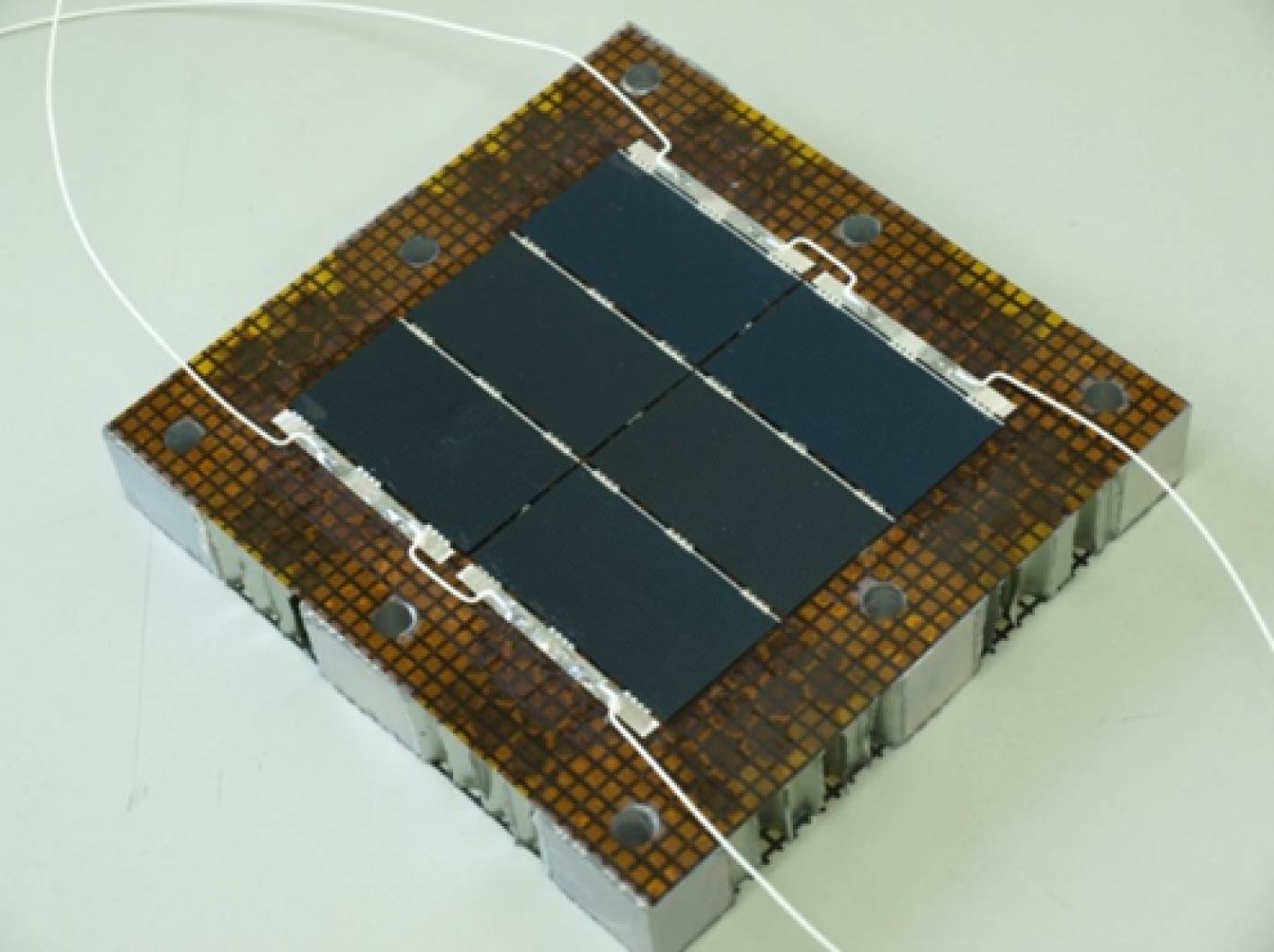
 DownLoad:
DownLoad:





